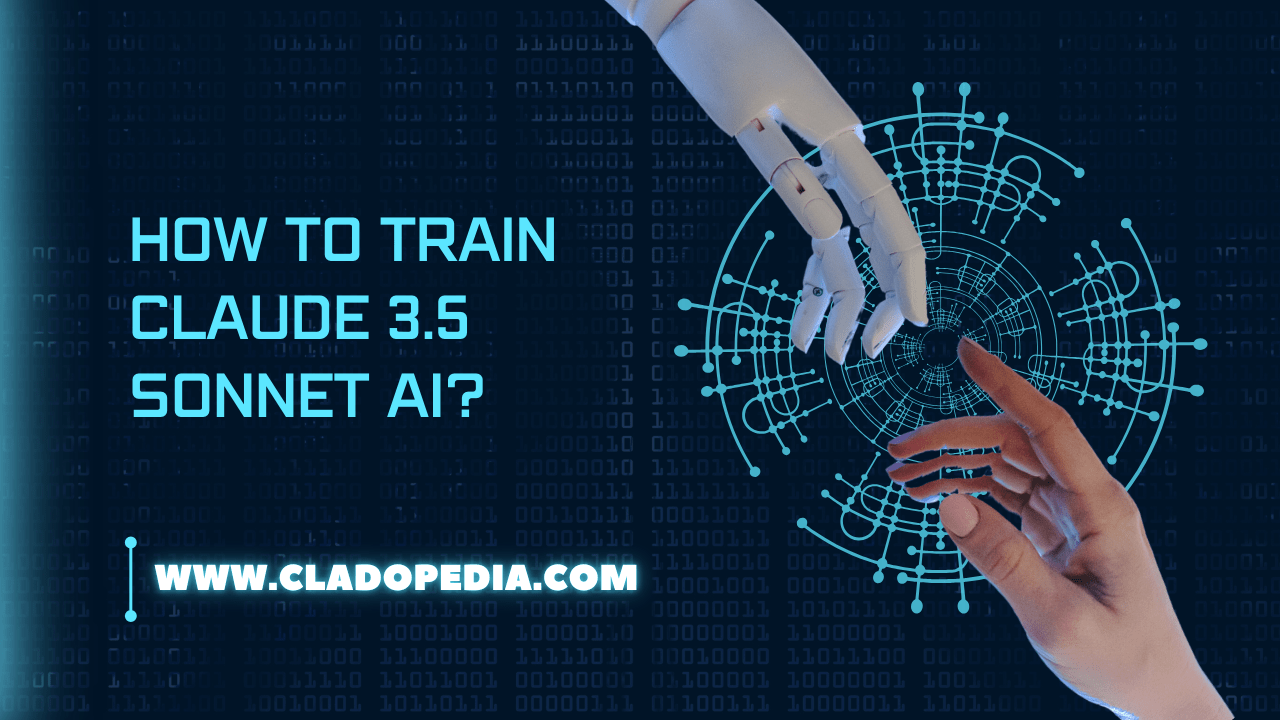Artificial Intelligence (AI) is transforming industries and shaping the future of human interaction with technology. Among the cutting-edge AI models in 2024 is Claude 3.5 Sonnet, a powerful language model that has gained widespread attention for its performance, scalability, and applications in various sectors. Training an AI model like Claude 3.5 Sonnet requires a deep understanding of machine learning techniques, computational resources, and well-structured data.
Claude 3.5 Sonnet is an advanced iteration of Anthropic’s AI models, designed to understand and generate human-like text with high accuracy and efficiency. This model excels in natural language processing (NLP) tasks, including text generation, summarization, translation, and question-answering. Its architecture is based on transformer networks, a key innovation in AI that has revolutionized deep learning.
The success of Claude 3.5 Sonnet stems from its ability to scale and adapt to various industries. Whether applied in customer support, content creation, or technical writing, it shows remarkable linguistic intelligence.
Understanding the Training Process
Overview of Machine Learning Models
Training an AI model involves teaching it to recognize patterns and relationships within data so it can make accurate predictions. Machine learning models, particularly those based on deep learning, rely on multiple layers of neurons (hence the term “neural networks”) to process and analyze data.
Claude 3.5 Sonnet is a transformer-based model, an architecture designed to handle sequential data and capture the context of language more effectively than older models like recurrent neural networks (RNNs).
What Makes Claude 3.5 Sonnet Different?
The Claude 3.5 Sonnet model stands out due to its superior language understanding capabilities, particularly when compared to other models. With over billions of parameters, it can handle more complex tasks, understand subtle nuances in text, and generate more human-like responses.
Key differences include:
- Larger Parameter Size: Enhances the model’s ability to process larger and more complex datasets.
- Contextual Awareness: Improved ability to understand the broader context of language, making it more accurate in conversational AI tasks.
- Faster Training Times: Optimized algorithms that reduce computational resources and time during the training process.
Data Collection and Preprocessing
Importance of High-Quality Data
The success of any AI model, including Claude 3.5 Sonnet, is heavily reliant on the quality and diversity of the data used during training. High-quality data helps the model learn a broad spectrum of linguistic patterns, vocabulary, and context, which enhances its ability to understand and generate text.
Sources of training data can include:
- Open Source Texts: Books, research papers, blogs, and news articles.
- Domain-Specific Data: Industry-related documents, customer service interactions, etc.
- Synthetic Data: Created through data augmentation techniques to increase the dataset’s size without requiring new data collection.
Techniques for Data Preprocessing
Before feeding data into the Claude 3.5 Sonnet AI, preprocessing is essential. This includes:
- Text Normalization: Converting text into a consistent format (lowercasing, removing special characters).
- Tokenization: Breaking down text into smaller units (words, phrases) that the model can understand.
- Removing Stopwords: Filtering out common words (such as “the,” “is,” etc.) that do not contribute significantly to the understanding of context.
- Handling Missing Data: Filling in gaps or excluding incomplete records to maintain data quality.
Choosing the Right Training Algorithm
Supervised Learning vs. Unsupervised Learning
Training Claude 3.5 Sonnet involves a combination of supervised and unsupervised learning techniques:
- Supervised Learning: The model is trained on labeled data, where the correct output is known. This is useful for specific tasks like question-answering, where the model needs to learn accurate responses.
- Unsupervised Learning: The model discovers patterns in the data without explicit labels. This helps Claude 3.5 Sonnet generate text and infer relationships between words.
Optimizing for Natural Language Understanding
Claude 3.5 Sonnet’s primary task is natural language understanding (NLU). To optimize it, the model is trained using:
- Masked Language Modeling (MLM): The model predicts missing words in a sentence, enhancing its ability to understand context.
- Next Sentence Prediction (NSP): Helps the model determine the logical order of sentences, making it more accurate in conversation.
Training Infrastructure
Hardware Requirements
Training a large model like Claude 3.5 Sonnet demands significant computational power. Typical requirements include:
- High-Performance GPUs: Graphics processing units (GPUs) are essential for parallel processing during model training. NVIDIA’s latest GPUs (such as the A100) are widely used.
- TPUs (Tensor Processing Units): TPUs can also be used, offering accelerated training times for deep learning models.
- High Memory and Storage: Models like Claude 3.5 Sonnet require extensive memory (often in terabytes) to store the parameters and handle the large datasets.
Cloud Computing Options
For many users, cloud-based solutions provide a scalable and cost-effective way to train large AI models. Services like:
- Google Cloud AI Platform
- Amazon Web Services (AWS) SageMaker
- Microsoft Azure AI
These platforms offer scalable GPU and TPU resources, enabling users to train AI models without needing to invest in expensive hardware.
Model Fine-Tuning and Optimization
Once the base model is trained, it often needs to be fine-tuned for specific tasks or domains. Fine-tuning involves:
- Hyperparameter Tuning: Adjusting variables like learning rates, batch size, and the number of layers to improve model accuracy.
- Regularization Techniques: Preventing overfitting by applying dropout, weight decay, or early stopping techniques to ensure the model generalizes well to new data.
Evaluation Metrics
Measuring Model Performance
To ensure the Claude 3.5 Sonnet AI is performing well, a range of evaluation metrics can be used, including:
- Accuracy: Measures how often the model’s predictions are correct.
- Precision and Recall: These metrics evaluate how well the model identifies relevant instances, especially in classification tasks.
READ MORE: Claude 3.5 Sonnet Jailbreak Prompt: An In-Depth Exploration
Deploying the Model
From Training to Production
Once the Claude 3.5 Sonnet model is trained and fine-tuned, it must be deployed into production environments. This involves:
- Model Hosting: Using cloud platforms to host the model so that it can be accessed via APIs.
- Load Balancing: Ensuring the model can handle high traffic without downtime.
Challenges in Training Claude 3.5 Sonnet
Computational Costs
Training large models is resource-intensive. The computational costs can be prohibitive, especially for smaller companies. However, cloud computing offers scalable solutions to mitigate these challenges.
Ethical Considerations
AI models like Claude 3.5 Sonnet raise ethical questions, particularly regarding bias in language understanding and the use of sensitive data. Developers must ensure the model is trained on diverse datasets and follows ethical guidelines.

Best Practices for Training AI Models
- Use Diverse Data: Incorporate a wide range of data sources to ensure the model generalizes well.
- Regular Model Evaluation: Continuously monitor performance to catch any potential biases or errors early.
- Optimize for Scalability: Ensure that the model can scale efficiently to meet increasing demand.
Conclusion
Training Claude 3.5 Sonnet AI is a complex process that requires high-quality data, powerful computational resources, and careful fine-tuning. By adhering to best practices, addressing ethical considerations, and leveraging advanced infrastructure, you can unlock the full potential of this powerful language model. As AI continues to evolve, models like Claude 3.5 Sonnet will play a crucial role in shaping the future of human-computer interactions.
FAQs
1. What makes Claude 3.5 Sonnet different from other AI models?
Claude 3.5 Sonnet is a transformer-based model known for its scalability, efficiency, and superior natural language understanding.
2. Can I train Claude 3.5 Sonnet on my own hardware?
Yes, but training such a model requires significant computational power, including high-performance GPUs or TPUs.
3.How long does it take to train Claude 3.5 Sonnet?
The training time varies based on the dataset size and hardware used but can take days or even weeks on powerful systems.
4.Is Claude 3.5 Sonnet prone to biases?
Like all AI models, Claude 3.5 Sonnet can exhibit bias if trained on unbalanced data. It’s essential to use diverse datasets to mitigate this.
5.What are the best cloud platforms for training AI models?
Popular platforms include Google Cloud AI Platform, AWS SageMaker, and Microsoft Azure AI for scalable training solutions.
